US Oil Sands, a Canadian mining firm which recently
acquired Earth Energy Resources, now holds the leases and mining rights to over
31,000 acres of State Trust Land in Eastern Utah. Over 48 of 145 well cores have already been drilled, and the company hopes to be up and running commercially by
as early as January 2013.
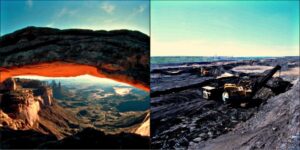
Tar sands mining is planned within the airshed of National Parks
Canadian tar sands strip mining is commonly held to be the most
destructive project on the planet. The Guardian UK labeled it the Earth’s “
worst ecocide.” In the Province of Alberta, an area as large as the State of Florida has already been transformed from
pristine boreal forest into dark, toxic
wasteland. Tar sands have devastated the ancestral lands of
First Nations,
ruined Canada’s reputation as a leader on environment and social justice, and have allowed the outdated fossil fuel industry to continue expanding into new, more destructive and energy-intensive ventures–effectively delaying action on climate change, diverting
investment in renewable energy technology, and tightening it’s deadly grip on governments around the world.
Until now, the US has been spared the scourge of tar sands mining; mainly because extracting the bitumen from the soil takes huge amounts of water, and most of the tar sands reserves in the US are found in Utah, which is the nation’s second-driest state. The Canadian company claims to have developed a method of separation using a secret “citrus-based solvent” which doesn’t use as much water as conventional Albertan mining. The sand, they promise us, is left “beach-clean” after processing. Against all common sense and historical precedent, Utah’s government has chosen to take the industry at its word.
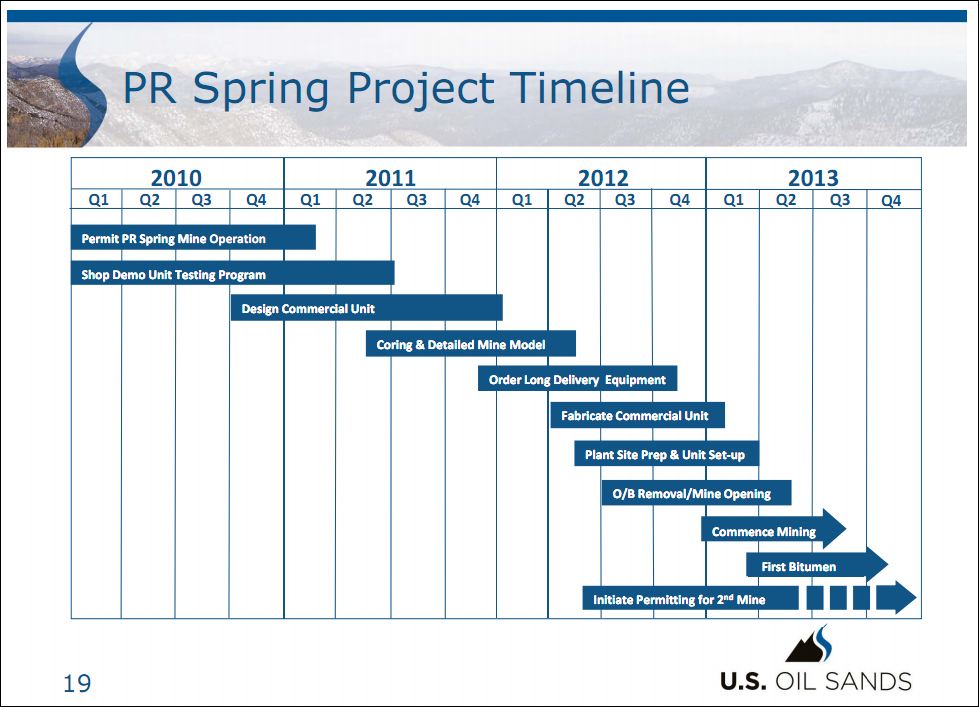
A screenshot from the actual corporate presentation showing current/planned tar sands mining in E. Utah
FAQ’s:
–
Q: Is the solvent really safe?
A: No. It is strong enough to melt asphalt, is made of a secret blend of chemicals, and will be used in a watershed that provides drinking water to over 80 million people.
–
Q: What about the water?
A: There isn’t a drop of water
left to be allocated in the Colorado River watershed. Heaven only knows where they are planning on buying the acre-feet needed for strip-mining operations. We do know that the State of Utah will do what they can to help them out, even if it means urging citizens to conserve so there is enough left over for industry. (“Industry” is the
State Motto)
–
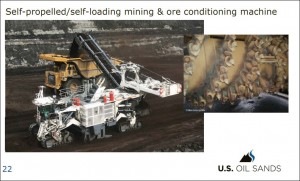 Q: What about the Federal Government?
Q: What about the Federal Government?A: The Bureau of Land Management under the Department of the Interior is currently writing up a “PEIS”, (Programmatic Environmental Impact Statement) which is basically a rule book for developing tar sands and oil shale on public lands. Until this is done, only sites that are trying to prove their new technologies on a non-commercial scale are allowed to mine. We don’t know when the PEIS will be ready, and the public comment period is closed. (Read
the letter to the BLM by Living Rivers and signed by Peaceful Uprising.)
–
Q: What are you doing to stop the mine??
Well, we are working with
Living Rivers and
Western Resource Advocates, who are challenging the legality of the permits issued by the State, and will continue to pursue these avenues until the permits are withdrawn. If they aren’t, and the mine goes forward, the company can expect further
nonviolent direct action from ordinary citizens who are committed to defending the land and our children’s future from the most destructive project on the planet.
–
Q: Why does the state want to mine so enthusiastically?
A century or so ago, the Federal Government gave a bunch of land to Utah for the “benefit of its citizens.” They “trusted” Utah to use it well. So the State created the “State Institutional Trust Lands Administration” (SITLA) to develop those lands carefully, in order to generate revenue for Utahns. As it is, much of the money generated leasing these lands for development, (strip-mining for example) goes to Utah’s public schools. The amount is negligible. And it is worth noting that employees at SITLA receive bonuses for encouraging fruitful development on SITLA lands, regardless of the cost to the environment or the children who will inherit it.
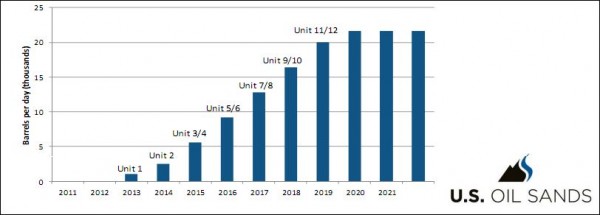
Screen shot of US Oil Sands corporate presentation showing their extraction ambitions
–
Q: Where can I find out more about this story?
There are a lot of great sites, but a treasure trove can be found at
Living Rivers and
Western Resource Advocates. Peaceful Uprising will be adding more and more information as the story unfolds, as well.
–
Q: How can I help?
A: First, sign up for our Action Alerts. As our Tar Sands Campaign grows in the coming months, we will be sending out special alerts and ways you can get involved. You can also volunteer to compile research for our website, by contacting ashley@peacefuluprising.org.
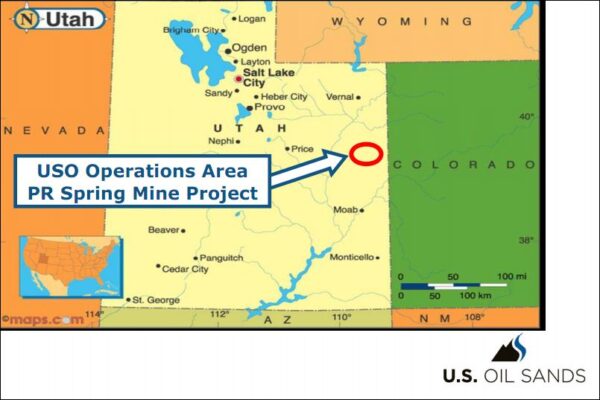
Bonus Factoids:
-Earth Energy Resources owned the rights to mine 7,835 acres before being bought by US Oil Sands.
-US Oil Sands bought Earth Energy Resources on April 17, 2011, retained D. Glen Snarr as CFO and President, new CEO Cameron M. Todd.
-January 14, 2011, acquired 23,850 more acres from SITLA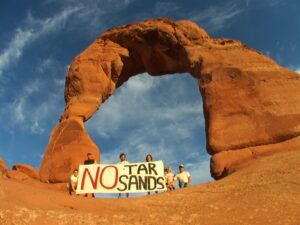
-Tar Sands mining uses about as much energy to pull out of the ground and process as is generated by burning it.
-The “Primary Market” for the tar sands oil is Salt Lake City refineries. The product will me brought to market by trucks.
SIGN UP if you want to help keep tar sands mining out of the US!
…






Leave a Reply